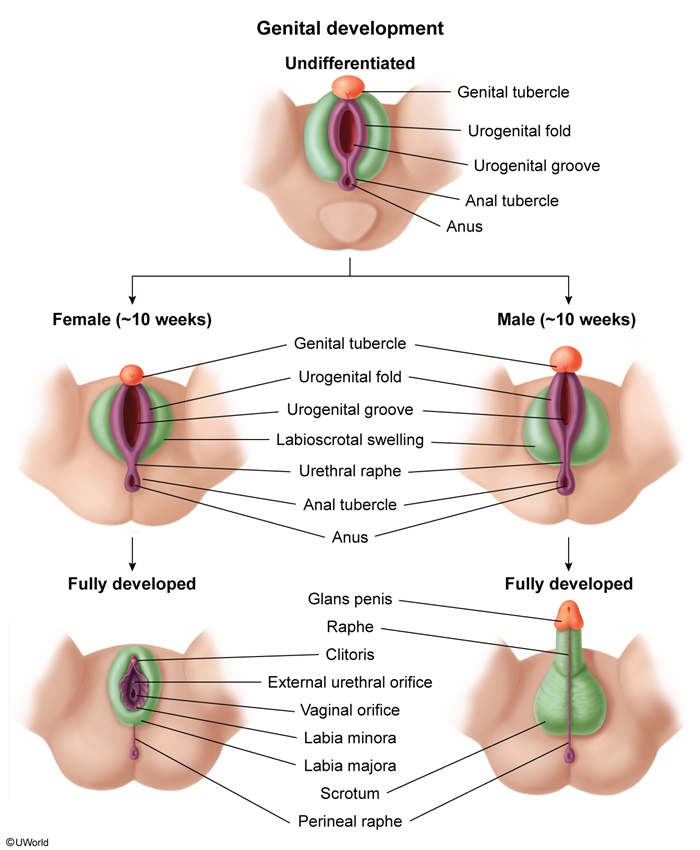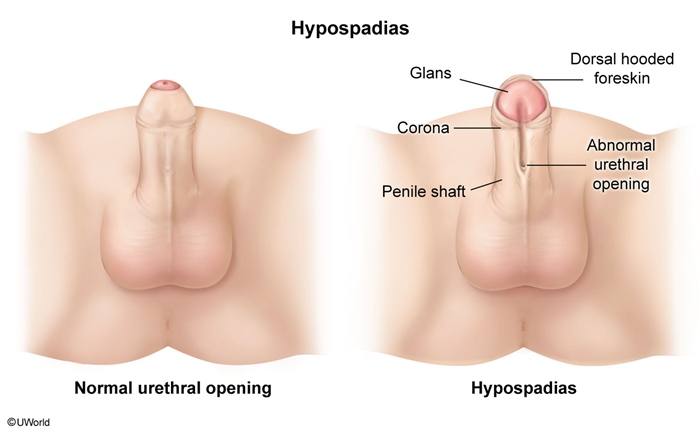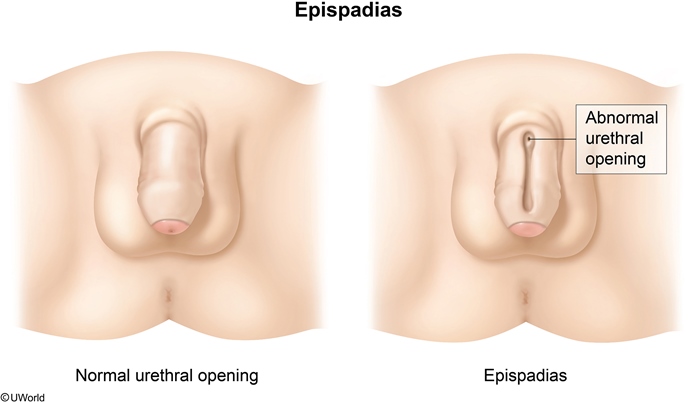Hypospadias
Article Sections
Introduction
Hypospadias is the most common congenital anomaly of the external male genitalia and presents with a ventrally positioned urethral meatus. It is typically an isolated finding and managed with surgical repair.
Pathogenesis
Differentiation and development of the external genitalia occur during weeks 8-15 of gestation (Figure 1). In male fetuses, androgens stimulate fusion of the urethral folds to form the ventral aspect of the penis and the penile raphe, which serve as the anterior wall of the urethra.
The mechanism of hypospadias is likely multifactorial due to genetic and environmental factors (eg, endocrine-disrupting chemicals), which result in incomplete fusion of the male urethral folds. This leads to an abnormally positioned urethral meatus, often accompanied by chordee (ie, abnormal ventral penile curvature) and a dorsal hood appearance (ie, extra dorsal foreskin with deficient ventral foreskin). The degree of fusion determines the location of the urethral meatus, and, in severe cases, the urethral opening is located proximally on the perineum or scrotum.
Continue Learning with UWorld
Get the full Hypospadias article plus rich visuals, real-world cases, and in-depth insights from medical experts, all available through the UWorld Medical Library.
Figures


